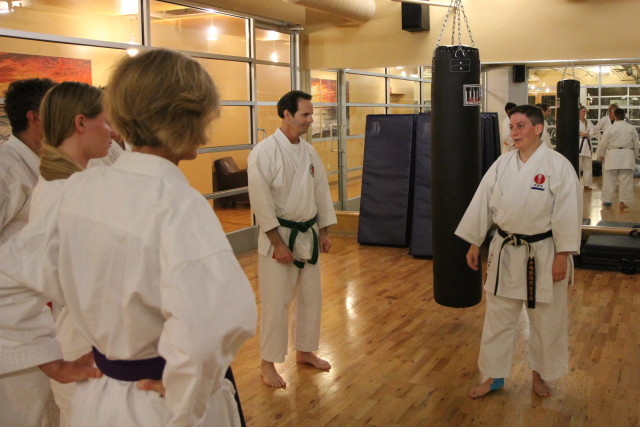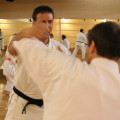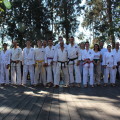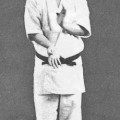It was great to have Sensei Ophira Bergman visit our dojo in Carmel Valley on Thursday, and share some of her vast knowledge of Ryuei-Ryu Okinawan Karate.
The Unique Origins of Ryuei-Ryu Okinawan Karate
Ryuei-Ryu is a very interesting style of Okinawan Karate. It was founded in the mid 1800’s by Norisato Nakaima (aka Kenri Nakaima), a native of Kume village in the Naha area of Okinawa. In 1839, Kenri Nakaima went to study martial arts in China, first under the head instructor of the Military Academy in Beijing, Master Ryu Ryu Ko, and later with other masters throughout China, including in Fujian province. (Master Ryu Ryu Ko is also rumored to have taught Chojun Miyagi, the founder of Goju-Ryu Okinawan Karate.) Kenri Nakaima probably learned Chinese Kenpo (mis-called “Kung-Fu”), as well as other topics such as use of weapons (Kobudo) and military tactics.
Historically, many Okinawan Karate styles were taught from father to son, and generally stayed within a family. In the late 19th and early 20th century, along with other developments in the martial arts world (e.g., Itosu Anko’s introduction of karate training into the school system in Okinawa), what were originally family styles started opening. For the first time, members of the general public could study martial arts. Ryuei-Ryu, however, continued to be kept a secret family style, to be taught only within the Nakaima family, well into the 20th century. It was only in the 1970’s that Nakaima Norisato’s grandson, Noritaka Nakaima (aka Kenko Nakaima) started accepting non-family members as students, with the aim of preserving the Ryuei-Ryu style from extinction. Kenko Nakaima’s first group of students consisted almost entirely of school teachers in Okinawa.
Ryuei-Ryu is therefore the last secret Okinawan Karate style to become open to the public.
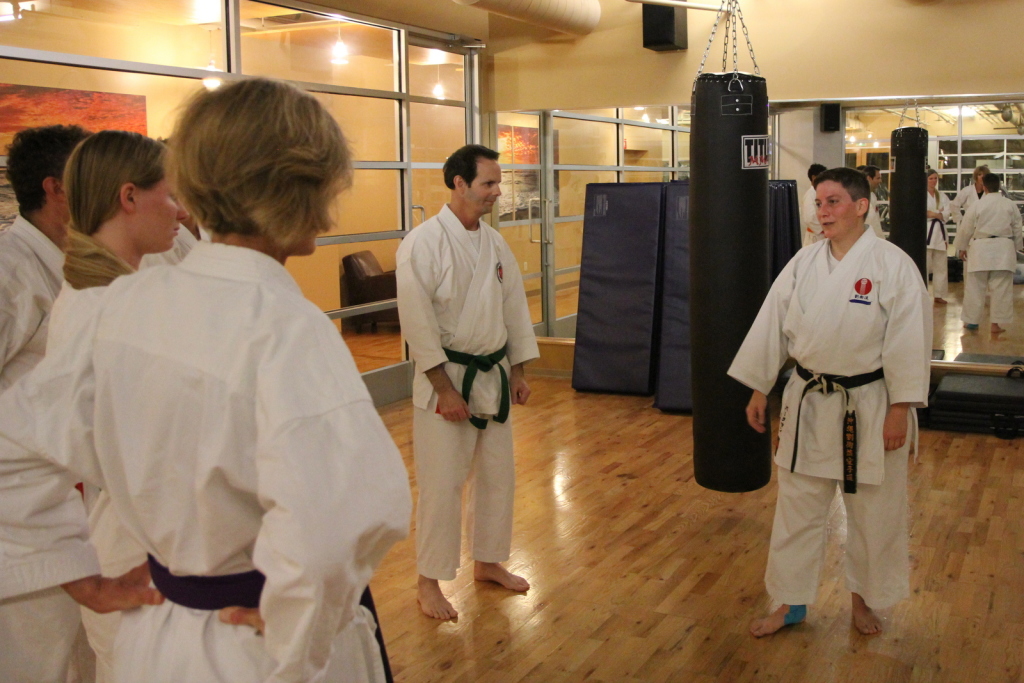
Ryuei-Ryu Draws World Interest
One of the school teachers taught by Kenko Nakaima in the 1970’s was Tsuguo Sakumoto. In 1984, Sensei Sakumoto appeared on the world karate championship circuit, seemingly out of nowhere, and proceed to win three World Union of Karate-Do Federation (WUKO) kata championships in his performance of the signature and beautiful Ryuei-Ryu kata Anan (in 1984, 1986 and 1988). Prior to Sensei Sakumoto competing, not many people heard about Ryuei-Ryu Karate. Obviously, people’s interest in the style was piqued, and today, you can find Ryuei-Ryu practitioners in Okinawa, as well as throughout the United States, Europe, Argentina and Venezuela.
Ryuei-Ryu is a very interesting and Unique Style
Here is a video of the Japanese female karate team performing the kata Anan (also mis-spelled Annan), and demonstrating an application (Bunkai) of the kata. You can immediately recognize that that kata is an “older” kata:
- In many of today’s version’s of other kata, closed-fist punches prevail as the “bread and butter” strike. In Anan, on the other hand, there are open palm and many closed palm strikes, but no “plain” fists. (We have talked in the past about the closed fist being a relatively modern invention, introduced not necessarily for reasons of efficacy.)
- A lot of interesting body shifts (tai -sabaki), as opposed to the “plain” stepping forward in front stance (Zenkutsu-dachi) found in other kata.
- In fact, Anan has no front stances — instead, high stances are used (Moto-dachi).
- The tempo of the movement is different than in other kata, with techniques inserted on the “off beat” (remember the off-count drill that Sensei Ophira Bergran taught at training?)
In my opinion, those are all indications of Ryuei-Ryu maintaining its original Okinawan (and Chinese) martial arts roots. Concepts that may have blended in other styles, or become more esoteric, have remained more concentrated in Ryuei-Ryu due to the later opening of the style to the outside world.

Thank you again to Sensei Ophira Bergman!

